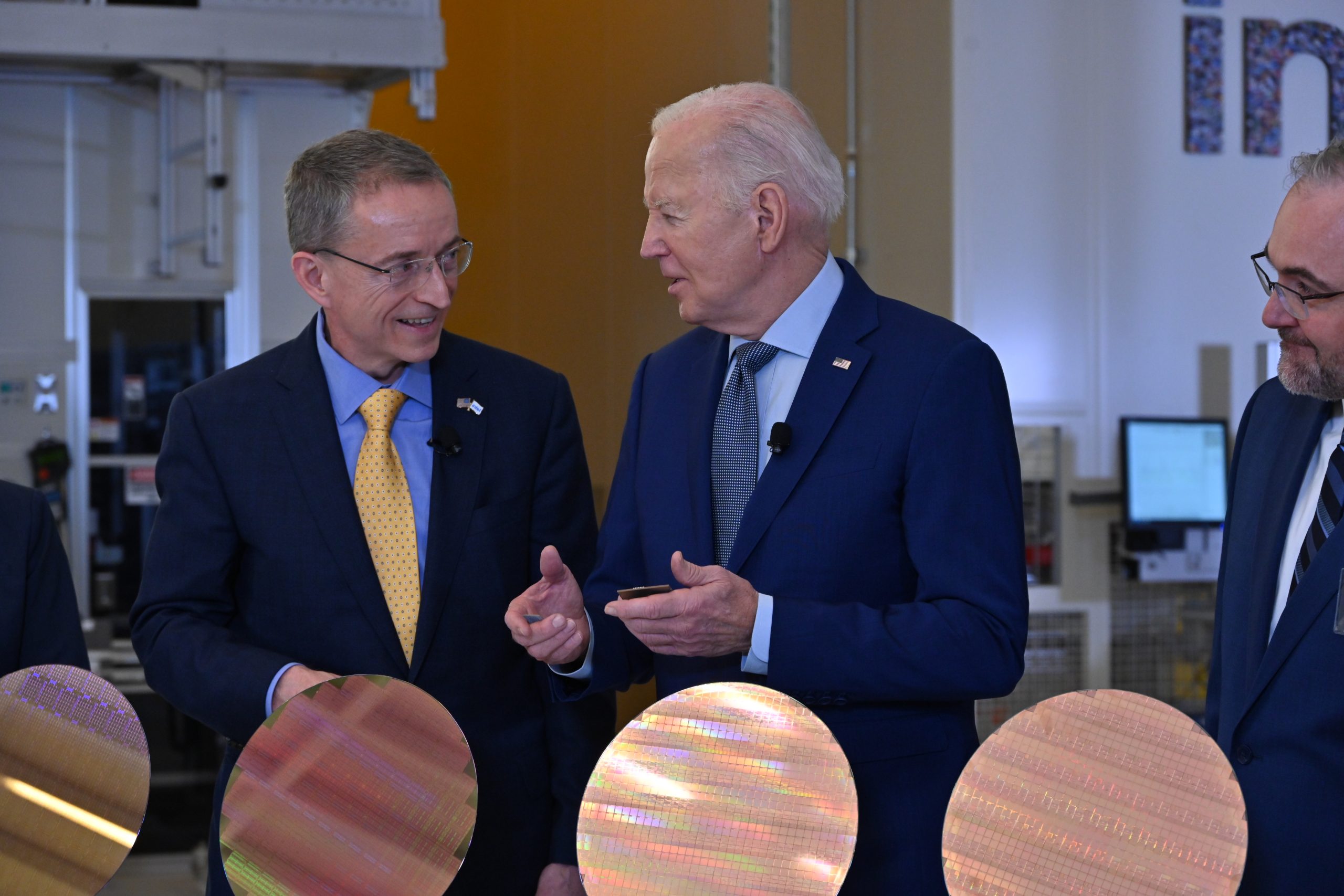

Intel chief executive Pat Gelsinger speaks with US President Joe Biden during a tour of an Intel semiconductor factory in Chandler, Arizona in March 2024. Image credit: Intel
The United States is expected to more than triple its domestic chip manufacturing capacity and to control nearly 30 percent of advanced chipmaking by 2032, thanks to measures including the 2022 Chips and Science Act, while China is to manufacture only 2 percent of the most advanced chips, according to a study from the Semiconductor Industry Association (SIA) and Boston Consulting Group (BCG).
The US could be producing 28 percent of chips below the 10 nanometre manufacturing process by that date, the study found.
From a base of 10 percent of the world’s chip manufacturing capacity in 2022, US chipmaking capacity is expected to grow by 203 percent in the next decade to account for 14 percent of the world’s total chip manufacturing capacity.
Without the Chips Act the US share would have slid further to 8 percent, the study found.
Neither the US nor China currently have any significant manufacturing capacity below 10 nanometres, with nearly all such chips being manufactured in countries such as Taiwan and South Korea.
Chips Act subsidies have encouraged Taiwan Semiconductor Manufacturing Co. (TSMC) and South Korea’s Samsung to build out advanced manufacturing capacity on US soil, with TSMC planning 3nm and 2nm fabrication plants in Arizona and Samsung building 2nm chip capacity in Texas.
TSMC received a $6.6 billion (£5.25bn) grant under the Act and Samsung was awarded a grant of $6.4bn.
Intel said in March it would invest $100bn in building out its US chip capacity after receiving a $20bn Chips Act award.
China, meanwhile, has invested more than $142bn into its domestic chip industry, but much of that has gone into lower-end chips as the country seeks 70 percent semiconductor self-sufficiency by 2025, in part due to the pressure of US chip export controls.
As a result mainland China is expected to hold only 2 percent of advanced chipmaking, but along with Taiwan will continue to lead in worldwide wafer fabrication capacity with 21 percent for Taiwan and 17 percent for the mainland, the report found.
China tripled its wafer fab capacity from 2012 to 2022, while the US capacity increased only 11 percent during the same period.
The report found mainland China’s domestic chip design firms mostly focus on consumer electronics, industrial control systems and intelligent devices, remaining “less competitive in advanced CPUs, GPUs, and FPGAs and corresponding higher servers and computer power management”.
China is expected to triple its share of chip manufacturing in the 10nm to 22nm range from 6 percent to 19 percent by 2032, and for chips above 28nm from 33 percent in 2022 to 37 percent in 2032, the report found.
Mainland China and Taiwan are expected to continue to hold the largest world share of assembly, test and packaging capacity due to “lower construction and skilled labour costs”, the report said.
Binance BNB token rises after WSJ report the Trump family is in talks to secure…
After failed Amazon deal, iRobot warns there is “substantial doubt about the Company's ability to…
Community Notes testing across Facebook, Instagram and Threads to begin next week in US, using…
Complete 180. FTC attorney now says federal agency can pursuit Amazon trial, after citing “severe…
Former board member and respected chip industry veteran Lip-Bu Tan appointed to lead troubled US…
MPs demand secret High Court hearing be held in public, after government had ordered a…